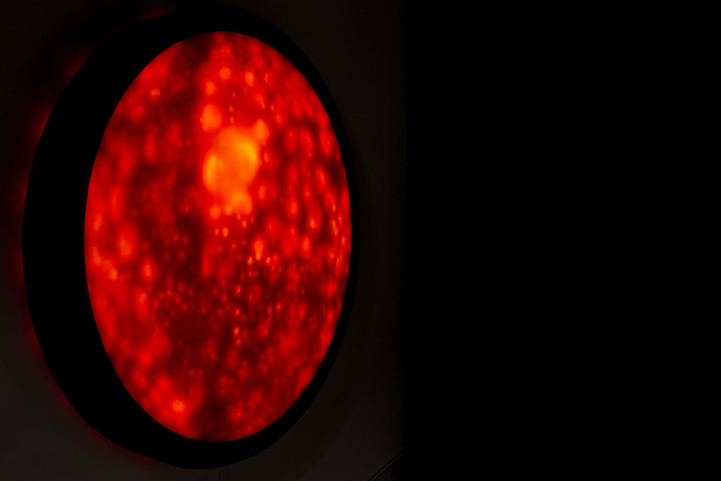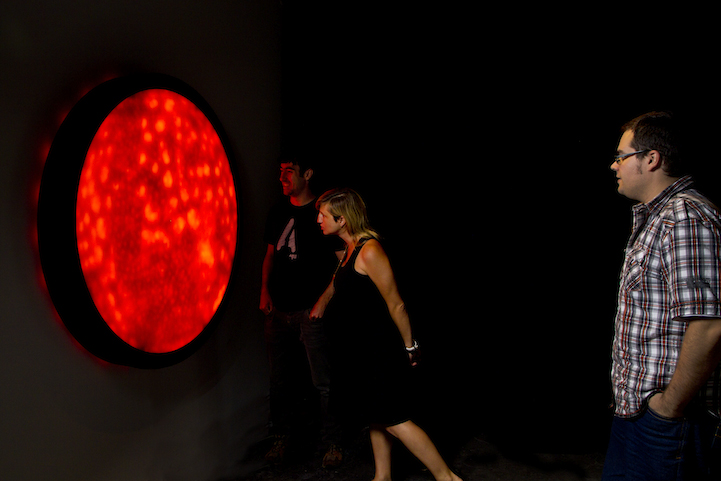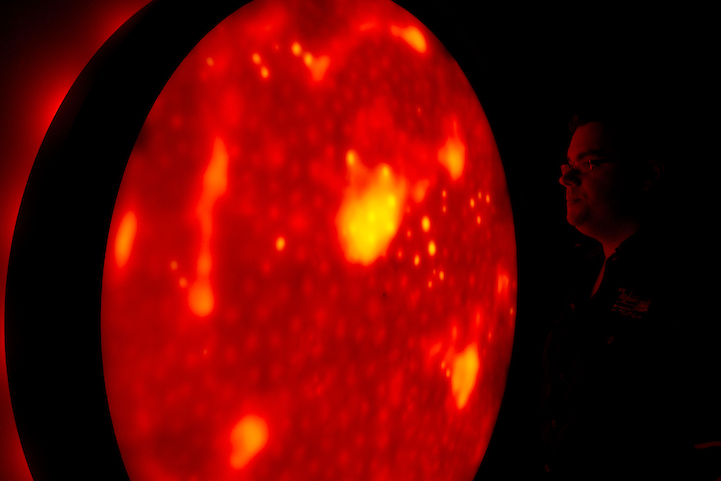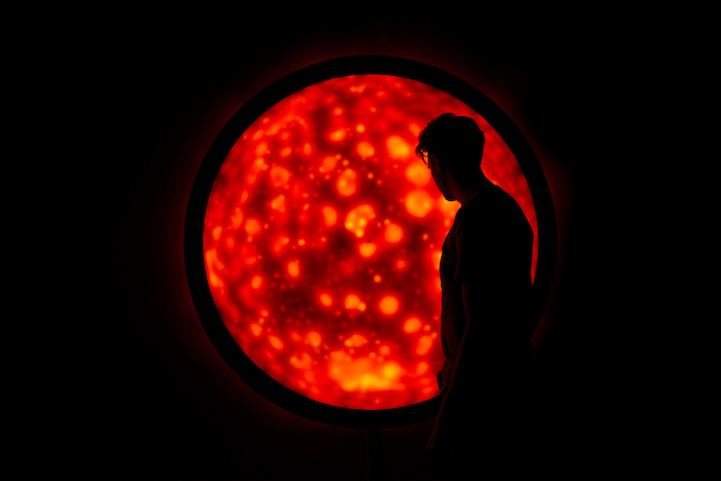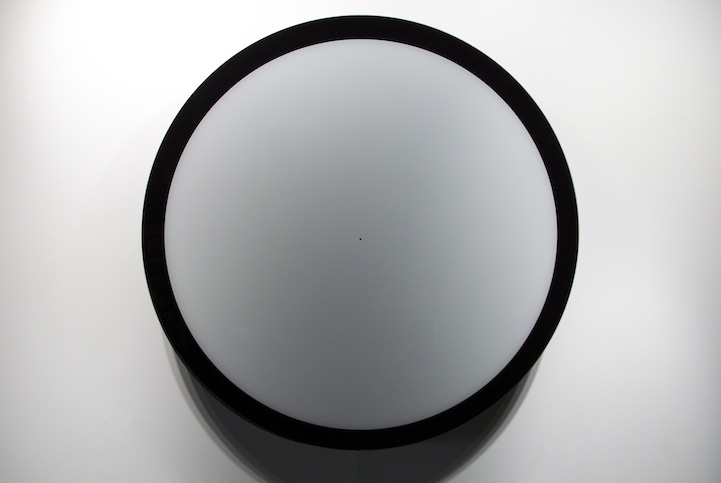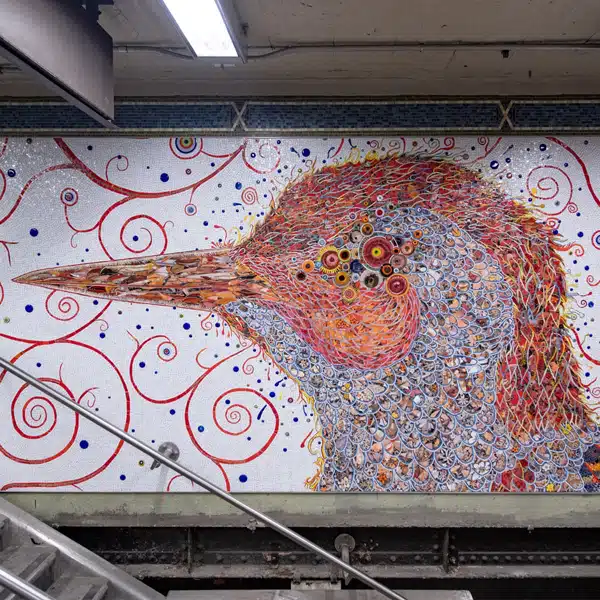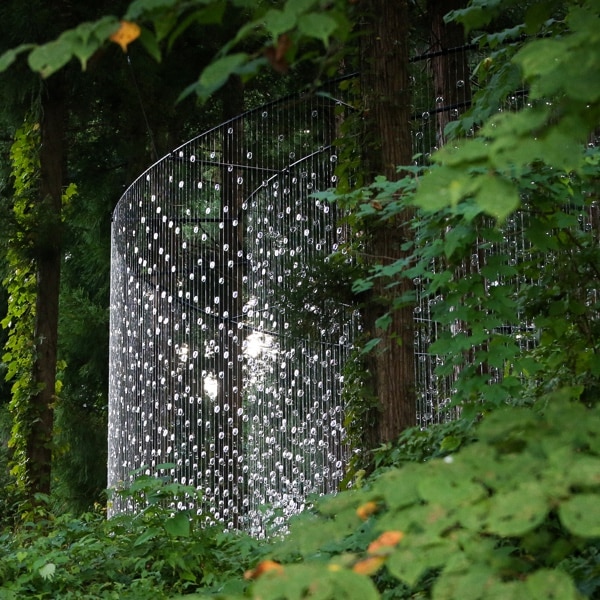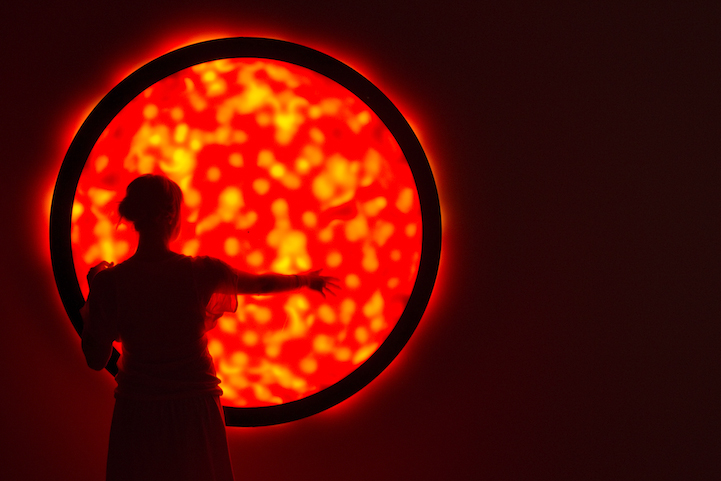
Earlier last year, we featured Rafael Lozano-Hemmer's gigantic simulation of the Sun's surface. Recently, we came across another one of his interactive and technologically-advanced projects, entitled Flatsun. The piece is a circular panel that simulates the surface of the Sun, based on a variety of Lozano-Hemmer's mathematical equations. These equations are set to react to the movement of the public. In a busy room, the animations become active and rapid. However, if the room is empty, the turbulence and flares on the screen slow down and, eventually, with no visitors in site, it will completely turn off.
Flatsun is 4.5 feet in diameter and is a representation of the Sun, but one billion times smaller than the real thing. The structure is created out of custom panels which contain 60,000 red and yellow LED lights, a computer, a camera with a pinhole lens, and a mechanically engineered structure that allows for access to the back of the piece in case of necessary maintenance. Additionally, a small knob provides control over the brightness, and turns the lights on or off.
As with many of the artist's pieces, Flatsun encourages viewers to interact with his artwork. While standing in front of the panel, visitors can wave their arms around or move back and forth to initiate life on the screen. For a virtual experience of the piece, you can check out the video below.
